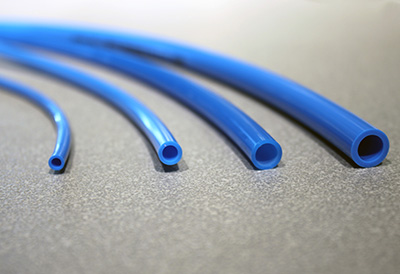How to Reduce Cycle Times by Choosing Proper Gas Hoses

When setting up your leak detection station ensure you use adequate hoses and connectors.
When setting up your leak detection station, complete with tracer gas handling tools, ensure that tracer gas is filled and evacuated by using adequate hoses. This is particularly important if you are testing objects with big volumes and/or at high test pressure.
Hoses are used to transport tracer gas between the filling equipment (or gas bottle) to the product to test at filling and evacuating. When choosing hoses, keep in mind that their length will influence the test cycle −the longer the hose, the longer the cycle time will be. You should therefore avoid unnecessarily long filling hoses if you wish to keep your test cycle short. Choosing a large hose diameter will also impact positively the cycle time. Filling and evacuating times can, for example, be reduced by 25% when increasing the hose diameter from 6 to 8 mm.
The choice of internal or external quick connectors applied to the hoses will also play an important role in terms of cycle times. Using internal quick connectors will reduce the hose diameter and result in a flow restriction, making it “difficult” for the gas to pass through. External quick connectors are therefore preferred. Also ensure that your system has no restrictions along the gas way to the test object.
Exhaust hoses can be used to transport gas out of the work station. These hoses should be long and large enough as their purpose is to transport exhaust gases far enough away from the leak detection station.
Do you want to hear more about how to lower process costs by optimizing and accelerating the entire gas handling process? Contact us at reachus@inficon.com.